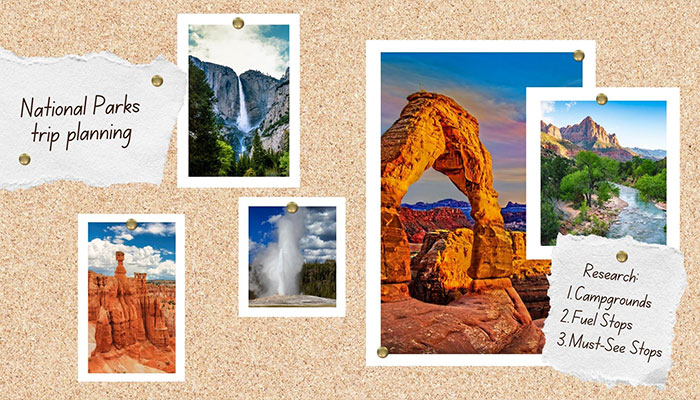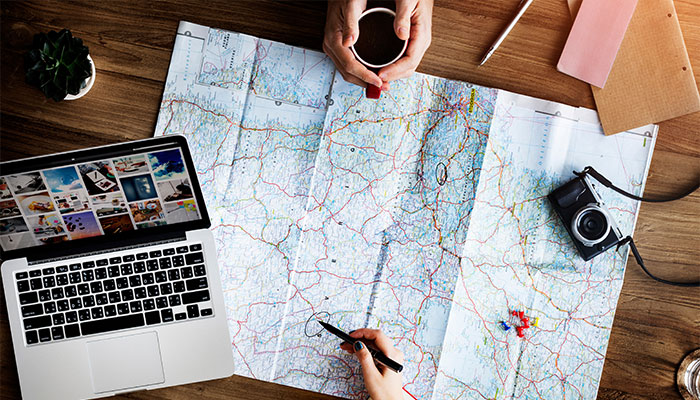There’s nothing quite like setting out on the open road, coffee in hand, the hum of your rig blending with the rhythm of anticipation. But if you’ve ever tried to plan an RV trip, you know that freedom takes a little structure. It’s part road trip, part home management, and – let’s be honest – part organized chaos. The good news? With the right RV trip planner and a little know-how, you can trade “overwhelmed” for “excited” before your wheels even start turning.
Start With the Big Picture – What Kind of Trip Do You Want?
Every great RV adventure begins with a spark of an idea. Maybe it’s the lure of Route 66’s vintage diners, the wild peaks of Alaska, or the slow toes-in-the-sand charm of the Florida Keys. Before you start dropping pins on a map, pause and think about why you’re going. Are you chasing national parks? Festivals? Maybe a little of both?
Think of your trip as a story – what kind do you want to tell? Some RVers love the “bucket list” approach: Mount Rushmore, Yellowstone, the Grand Canyon. Others prefer a theme: “Historic towns and ghost stories,” or “Coastal sunsets and seafood.” Defining your focus helps filter the noise and keeps you from feeling like you have to cover everything.

Maps, Miles, and Must-Stops
Here’s where your RV trip planner really earns its keep. Mapping the route isn’t just about distance – it’s about rhythm. Drive too far and you’ll miss the magic between stops; move too slow and you’ll spend your vacation in parking lots.
Most RVers find that 200-250 miles a day is a sweet spot, especially if you want time for exploring (and, let’s face it, leveling your rig). A trip planner like AdventureGenie makes it easy to map routes, find fuel stops, and choose campgrounds – all in one place.
And here’s a pro tip that sounds obvious but gets everyone at least once: never trust a generic GPS. RV-safe navigation apps consider your height, propane restrictions, and bridge clearances – things you really don’t want to discover the hard way.
Campsite Strategy – The Art of Parking Your Home
Finding the right campground is half logistics, half intuition. Are you after a full-hookup RV resort with a pool and pickleball courts, or would you rather watch deer wander past your site in a quiet state park? Both have their appeal if you know what you’re looking for.
Book early if you’re traveling during peak seasons – especially for national parks or events like the Albuquerque Balloon Fiesta. Pull-through sites are great for bigger rigs; back-in spots often feel more private. And if you stumble upon a small-town park with river views and space for s’mores? Stay an extra night. The best stories often start with, “We hadn’t planned to stop there…”
Gear, Groceries, and the “Did We Pack That?” List
RV packing lists can spiral faster than a roll of paper towels in the wind. It’s easy to forget small things that make a big difference – like wheel chocks, leveling blocks, or that sewer hose you swore was onboard. A good rule of thumb: start your list a week early, and add to it every time you think, “Oh, I need to remember to pack....”
Apps like RV Checklist or Packing Pro can keep your prep organized, but sometimes a sticky note on the fridge works just as well. Food-wise, stock for two or three days at a time. Smaller fridges and local markets encourage you to eat fresh and support the towns you pass through.

Safety and Sanity on the Road
Here’s the thing: even the best-laid routes throw curveballs. Weather changes, detours happen, and yes – sometimes you’ll miss the turn (it’s fine). What keeps the trip smooth is preparation. Have roadside assistance coverage that includes RVs, like FRVA Medical & Travel Assist or Good Sam Roadside Assistance, and keep an emergency kit stocked with fuses, a flashlight, and duct tape (the “MacGyver” of RVing: you’ll be amazed what duct tape can do).
Also, don’t underestimate the mental side of safety. Schedule rest days. Watch the weather forecast before climbing mountain passes. And if your gut says “don’t push it today,” listen. The open road rewards patience as much as planning.
When to Let Go of the Plan
Ironically, one of the hardest lessons in RV travel is learning when to ignore your own itinerary. Maybe a fellow RVer at the campground mentions a hidden waterfall or a pie shop worth a detour. Go. You didn’t buy an RV to rush past life – you bought it to experience it.
The plan is your safety net, not your schedule keeper. The beauty of the RV lifestyle is that freedom lives in the pauses.
From Planning to Living the Journey
Planning your RV trip isn’t about controlling every mile – it’s about creating the space to actually enjoy it. With a little foresight and a flexible mindset, you’ll turn what could’ve been stress into something close to art.
And if the logistics ever feel overwhelming, you can always join a guided RV tour through companies like Fantasy RV Tours – where the routes, reservations, and camaraderie are all handled for you, leaving you free to focus on sunsets, stories, and the joy of the journey itself.